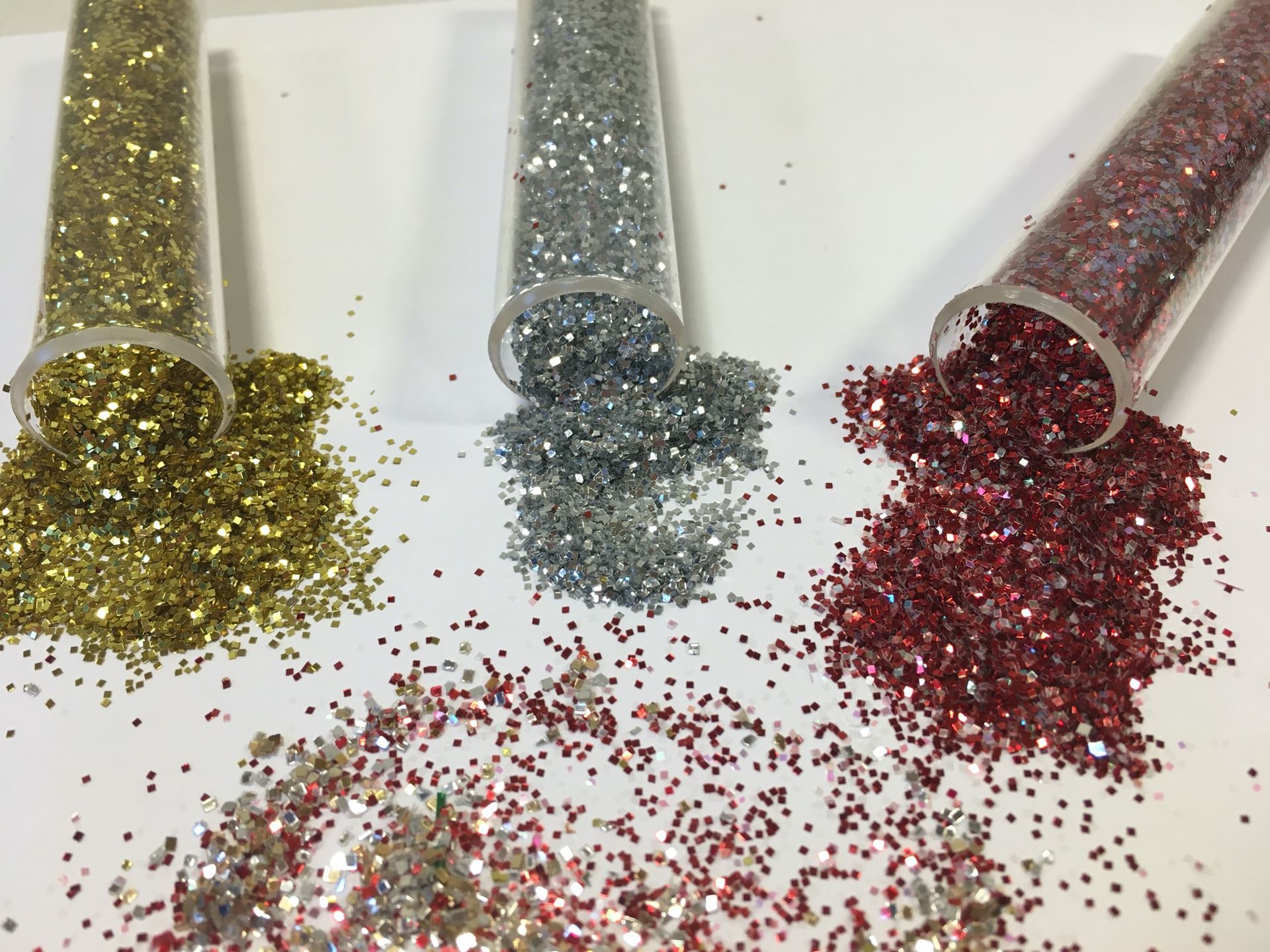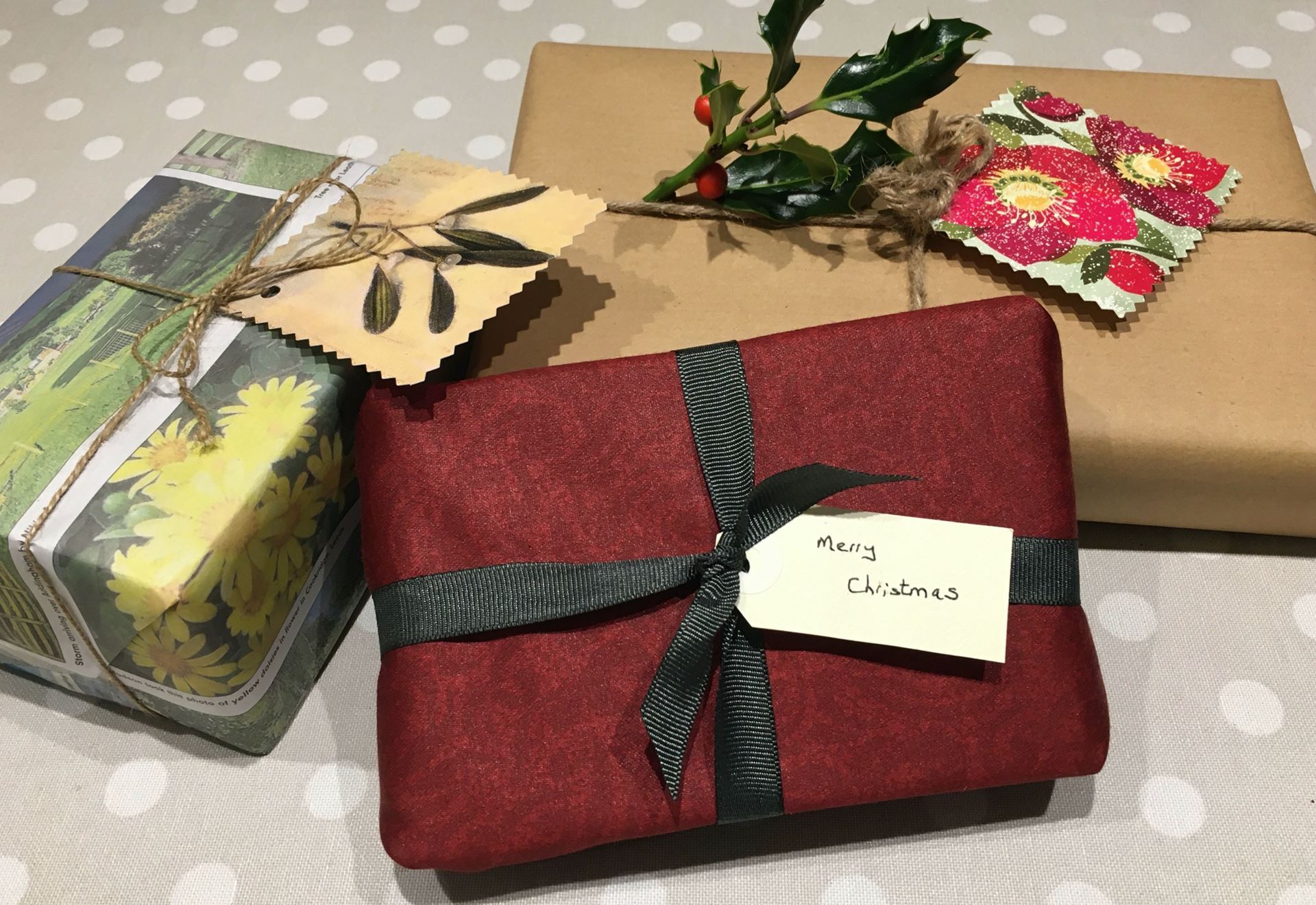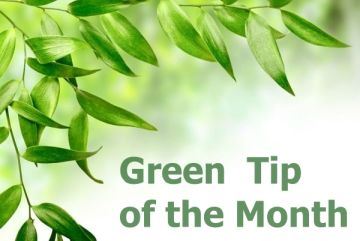|
|
Let’s make it a glitter-free Christmas!
I wonder if, like me, you are still finding vestiges of glitter from last Christmas around the house. Every year, it seems that glitter is used to decorate more and more things. At one time, it was just school children making their own Christmas cards with glue and a tube of glitter. Now glitter is big business. It’s everywhere – on cards, wrapping paper and present bags, crackers, decorations, and even on festive flowers, plants and wreaths. It is used to add a sparkle to just about everything that is sold at Christmas.
 |
What is glitter?
Glitter is made from a thin sheet made up of three layers: a layer of plastic (usually PET, the plastic used to make fizzy drink bottles) attached to a thin, coloured layer and then a reflective layer, often made of aluminium. The sheet is then cut into the tiny sparkly pieces that form glitter.
Why is glitter not a good idea?
The trouble is that glitter is not recyclable and it gets everywhere. Plastic is extremely slow to degrade in the environment, where it can last for hundreds of years. Much of the glitter ends up in landfill or is washed down drains where it ends up in water courses and is eventually washed into the oceans. It has been found in Arctic ice and in the stomachs of sharks. It is consumed by plankton, which are eaten by fish and so enters the food chain – and could end up on your plate. What’s more, all this waste plastic has been made from petroleum, which is non-renewable.
Some welcome developments
Some of the big supermarkets (including Morrisons and Waitrose) have committed to not including glitter in any of their own-brand Christmas products this year. It will be interesting to see to what extent they stock other brands which do contain glitter. Tesco, Sainsburys and Asda have all announced policies banning single-use plastics to different degrees. While we can make a point by not buying any products containing glitter, it is harder to prevent Christmas cards and presents from other people not being glitter-free. So, keep spreading the message!
Some other single-use plastic items that go to waste
Tinsel and many Christmas decorations cannot be recycled, so should be avoided. They are generally made in China and ferried across to the UK in shipping containers, which involves burning fossil fuels.
Wrapping paper is one of the most wasted materials at Christmas. Avoid any shiny, plastic-lined paper or paper decorated with glitter. Use the ‘scrunch test’ - anything that doesn’t keep its shape after you scrunch it into a ball is not recyclable. Instead, try wrapping your presents in brown paper, newspaper or scrap fabrics. The resulting parcels can look surprisingly festive when tied up with string, raffia (made from tree bark) or ribbon (provided it does not contain plastic). You can use luggage labels as gift tags or cut them from used (glitter-free) birthday or Christmas cards.

Presents wrapped in brown paper, newspaper (The Ilkley Gazette)
some scrap cutain material and tied with string or old ribbon
According to the waste management company, Biffa, the UK creates 30% more waste than usual over Christmas, including 227,000 miles of wrapping paper and 114,000 tonnes of plastic packing – not to mention 1 billion cards!
The over-riding message must be for us all to drastically cut down on Christmas waste and to recycle as much as we can.
You are here >>>>> |
|

